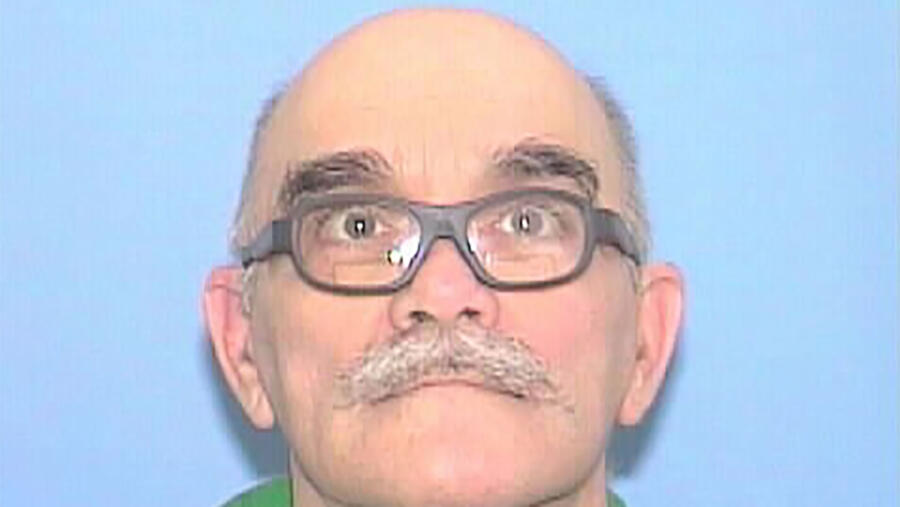Deborah Sheppard was a bright, friendly college student at Southern Illinois University when serial killer Timothy Krajcir cut her life short.
A friend found Sheppard’s nude body inside her Carbondale, Illinois, apartment on the night of April 8, 1982. Police later deduced that Krajcir had sexually assaulted Sheppard, then strangled her to death.
Sheppard was 23 years old and just two weeks away from graduating. Though both had been SIU students, police did not find any evidence that Krajcir and Sheppard knew each other.
Sheppard, like all Krajcir’s victims, was simply unlucky.
“He picked easy targets,” Paul Echols, the now-retired Carbondale Police Department investigator who eventually solved Sheppard’s case, tells A&E True Crime. Echols is author of In Cold Pursuit: My Hunt for Timothy Krajcir—The Notorious Serial Killer.
[Catch new episodes of Cold Case Files Fridays at 9/8c on A&E. And watch episodes on demand in the A&E app.]
For nearly 25 years, police had no idea who killed Sheppard, who had moved from her family’s home in Olympia Fields, Illinois to study marketing in Carbondale. This cold case puzzled investigators like Echols for years, until DNA technology helped them link Krajcir to the crime—and, as a result, many others.
In 2007, Krajcir, then 63, confessed to killing Sheppard and eight other women in Missouri, Illinois and Pennsylvania.
Sheppard’s murder with be the focus of a Cold Case Files episode airing on September 17.
Krajcir’s Random Attacks on Women
Krajcir stumped investigators because he chose his victims randomly and attacked in multiple geographic locations. His female victims shared very few, if any, commonalities. Some were white, some were Black. Some were in their 20s, while others were in their 50s and 60s.
Investigators believe Krajcir was motivated by sexual urges that led him to first rape, and then murder, his victims, says Echols.
“What he explained to me was that he would just get out of control,” says Echols, who has interviewed Krajcir several times. “He would go to other communities, go to parking lots of grocery stores [and other large department stores] and look for women. If somebody appealed to him, he would follow them to their house and park down the street, but he would not act in that moment. He would remember the address, then in a week or two, would come back, wait until the house was vacant, break in and then wait for the victim to come to him. “He targeted women he believed were widowed or lived alone, which Echols says helps explain why there’s such a big age discrepancy among his victims. Investigators believe Krajcir’s first murders were the killings of mother-daughter duo Mary and Brenda Parsh on August 12, 1977.
Brenda Parsh, then 27, had just flown home to Cape Girardeau, Missouri, to help her 58-year-old mother Mary Parsh while her father was in the hospital, Echols says. Police found the two women’s nude bodies lying next to each other on a bed with their hands tied behind their backs.
Krajcir had been stalking Mary Parsh, who he assumed lived alone, so he was surprised when the two women arrived back at the house, where he was lying in wait. He raped Brenda Parsh, then shot them both and left to attend a friend’s bachelor party, Echols says. The next morning, he was a groomsman at that friend’s wedding.
“We have a picture of that wedding—there he stands smiling in a line of groomsmen,” Echols says. “I showed him that picture and asked him, ‘What was going through your mind?’ He couldn’t understand what I was getting at. I said, ‘Well, you just killed two women, weren’t you thinking about that? Police might be looking for you.’ No, he didn’t give it another thought.”
Who Were Krajcir’s Victims?
After Mary and Brenda Parsh, Krajcir went on to kill seven more women over the next five years: Sheila Cole in November 1977, Virginia Lee Witte in May 1978, Joyce Tharp in March 1979, Myrtle Rupp in April 1979, Marjorie “Margie” Call in January 1982, Sheppard in April 1982, and Mildred Wallace in June 1982.
Krajcir, who had graduated from SIU with a degree in administrative justice in December 1981 and worked for an ambulance company in Carbondale, killed Sheppard after watching her through the window of her ground-floor apartment. After waiting for her male roommate to leave, he forced his way in through a window while she showered.
Sheppard’s death devastated her family, who had fiercely debated whether she should attend college in Carbondale before she left home. Bridgette Sheppard, who was 9 at the time of her older sister’s violent death, tells A&E True Crime that Deborah Sheppard was charismatic, determined and hard-working. Friends and family loved to be around her because of her warm, caring personality and her beautiful smile, she says.
“Her spirit was so delightful—everybody loved her,” says Bridgette Sheppard. “She represented light and love.”
The gaps between Krajcir’s murders line up with time he spent in prison for sex crimes in Illinois and Pennsylvania, including one involving a 13-year-old victim. When police eventually linked Krajcir with Sheppard’s killing in 2007, he was serving time in Illinois for an earlier sexual assault charge.
Where is Timothy Krajcir Now?
Today, Krajcir remains behind bars at Pontiac Correctional Center in Illinois, where he’s serving out 13 consecutive life terms. Echols says he believes Krajcir, now 76, does not feel remorse for his crimes, but knows what he did was wrong.
“He’s just wired differently than the rest of us,” Echols says. “He was fighting his inner demons for sure.”
Related Features:
What Are Some of the Oldest Cold Cases That Have Recently Been Cracked Open?
How a Group of Active and Retired Homicide Investigators Anonymously Solve Cold Cases
The ‘Redhead Murders’: Are We Any Closer to Solving the Mysterious Cases?


